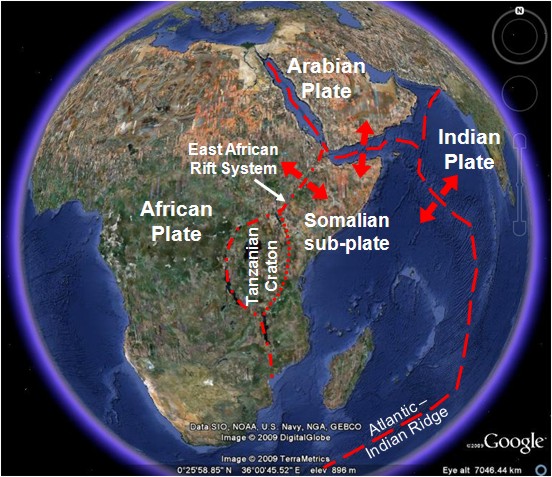
Figure 1: Regional plate tectonic setting. Red arrows show approximate direction of opening of the rift systems.
Geology of the Main Ethiopian Rift
The third arm of the Afar triple junction is the East African rift system. This extends through Ethiopia and Kenya and branches round the Tanzanian Craton before dying out in Mozambique Figure 1. The northernmost part of the East African rift system is the Main Ethiopian Rift which opens out into the Afar Depression. It is bound to the north by the Ethiopian Plateau and to the south by the Somalian Plateau (e.g. Beyene & Abdelsalam, 2005; Buck, 2006).
Extension between the Nubian and Somalian plates beginning about 25Ma lead to rifting along the East African Rift system. Rifting across the southern part of the Main Ethiopian rift began by about 18Ma and by about 11Ma across the northern part of the rift when it propagated northwards across older Red Sea/Gulf of Aden structures to form the Afar triple junction (Hendrie et al, 1994; Tesfaye et al, 2003; Wolfenden et al, 2004).
The Main Ethiopian rift is a central valley some 84km wide and is extending ESE-WNW at a rate of about 2.5mm/yr (Wolfenden et al, 2004). The rift is bordered by large, discontinuous Miocene aged normal faults (Abebe et al, 05; Pizzi et al, 2006, Tesfaye et al, 2006). Within the main rift are a series of right-stepping, en echelon Quaternary rift basins. These are typically about 20km wide and 60km long faulted magmatic segments and are embryonic oceanic spreading centres (Hayward and Ebinger, 1996; Manighetti et al, 1998 and Ebinger & Casey, 2001). The Miocene border faults are thought to be now inactive and extension focused along the magmatic segments (Ebinger & Casey, 2001; Casey et al, 2006; Keir et al, 2006).
